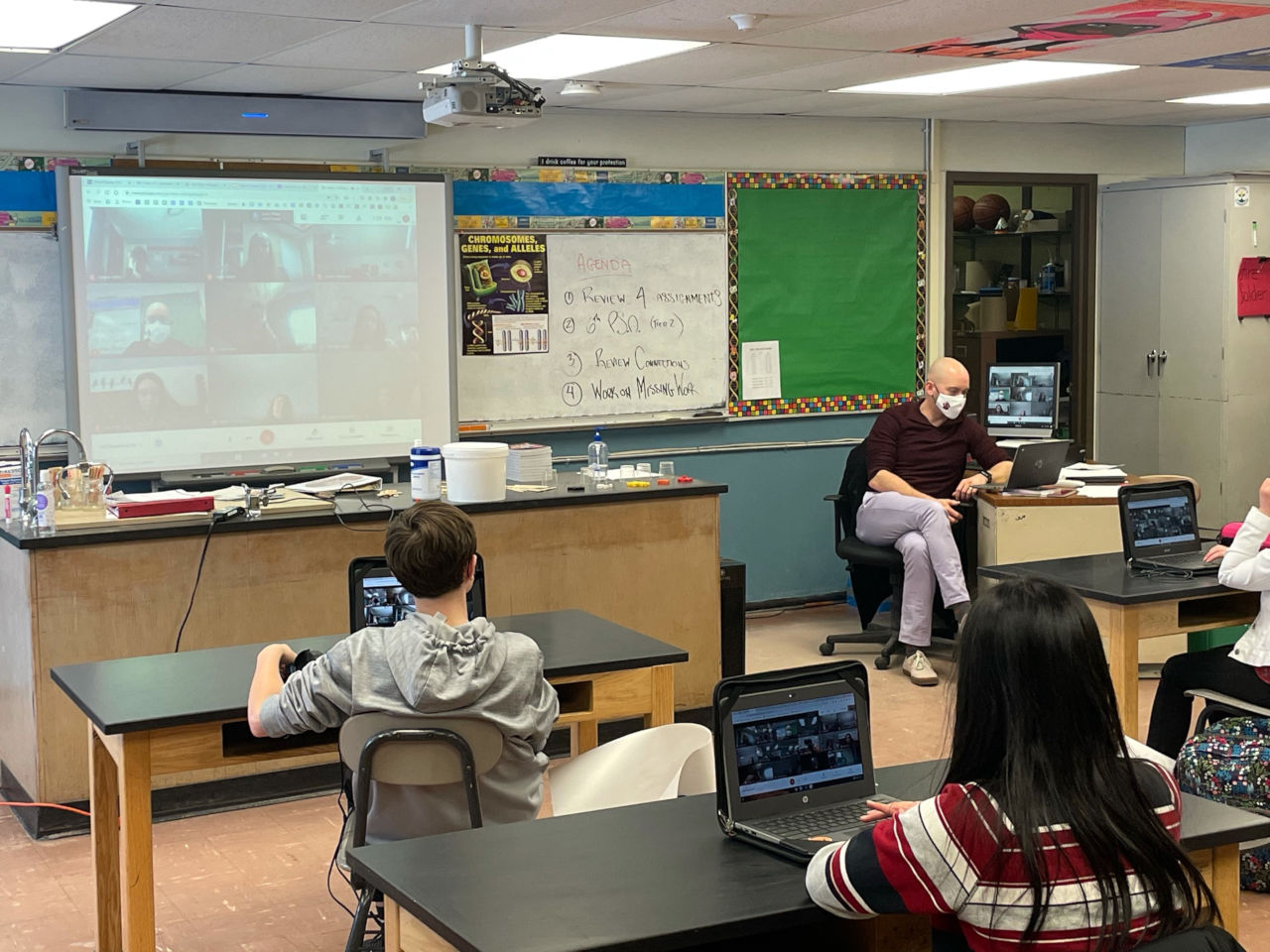The Value of Student Voice in Hybrid Classrooms
If teachers and students can’t hear one another, their contributions to learning are negated.

We know student voice is crucial to effective pedagogy -- both literally and figuratively. If teachers and students can’t hear one another, their contributions to the learning are negated.
“Hearing the tone, speech, and passion in students’ words is what drives our educators,” says Matthew X. Joseph, Director of Curriculum, Instruction, and Assessment at Leicester Public Schools in Worcester County, MA, a PK-12 district with 1,400 students. “Having the option to have clear sound to include both at-home learners and in-school learners gives a true ‘one class’ feeling.”
To help improve the audio quality in the classroom and for students learning simultaneously at home, the district piloted the Nureva HDL300 system. This audio system, designed for classrooms, captures the audio of everything happening in the classroom so students at home can clearly hear what the teacher and in-person students are saying during class. Teachers can stand and walk around, and in-class students can communicate with students learning from home, who can hear everything without any feedback or delay. The system installs on the wall in minutes, and its plug-and-play connectivity and auto-calibration makes setup simple.
“In-class learners can talk in a normal tone, and students at home can hear like they are in the room,” says Joseph. “The teacher can also teach at a tone and pace that everyone can hear. When they call on an at-home student, they feel they are included, and the lesson flows as if all students were in front of them. This kind of seamless connection is invaluable.”
SEL is Key
Creating time to have in-depth discussions can support the district’s learner's academic and social-emotional needs.
“Having the Nureva system in the room allows for an in-depth conversation without lulls or volume issues to interrupt the flow,” says Joseph. “When we talk SEL with our students, we want the emotion to be felt in our words. Students are more engaged when they can be heard and feel they are a part of the discussion.”

Timing is Everything
Even with ideal audio solutions, there are many challenges with hybrid learning. One challenge is over-planning. Joseph advises teachers to limit topics for each learning session to just one skill per lesson, so students leave feeling empowered, not overwhelmed. Include specific examples of taught skills to encourage students to practice their work skills when there is asynchronous learning time.
“We try to ensure the material we teach can be taught in half the class time,” says Joseph. “This will then allow for an opening and closing of every lesson. With possible connection issues and adjusting to online learning, we want to ensure there is time for warm-up, instruction, and closure.”
Pro Tips
To make the most of the hybrid classroom, Joseph recommends:
- Be present. Having the Nureva system allows educators to feel all students are in front of them—the divide between at-home and in-person students is diminished.
- Celebrate small wins. It's important to celebrate the small achievements. Small wins are opportunities to reflect on how far we've come, which gives us the strength to stay inspired.
- It’s okay if you don’t know all of the answers. This shift is new to all of us, demanding different skills and techniques. It's okay not to have all the answers. Take a breath, and work on solutions rather than feeling overwhelmed.
- Listen without intending to respond. When you're engaged in learning conversation, do you listen, or are you more focused on what to say next? Usually, we're only half-listening because we're already thinking about what questions we can ask students to add to the dialogue. Instead of thinking about what to say, be more present in your conversations with students and think about what you hear. By merely listening with curiosity, rather than anticipation, you will be inherently more present.
Teacher Feedback
“The Nureva system is great,” says eighth-grade science teacher Dave Socha. “It far exceeds the simple auxiliary speakers that I had hooked up to my desktop computer, which would go in and out as the input/output cords were bumped and shifted. The sound from the system is smooth and deep. It definitely adds to the experience when students speak on Google Meets, when we share recorded work products on FlipGrid or ScreenCastify, or when we're simply watching a video clip in class.”
These are challenging times on so many levels; anything that helps kids feel “normal” is a plus. More than just a perfunctory fix to enable students to hear lessons or each other, having audio tech that feels natural can be a game changer when it comes to the intangibles of teaching, and reaching, students.
Tools and ideas to transform education. Sign up below.
Sascha has nearly two decades of experience as a freelance journalist writing for national magazines, including The Washington Post, LA Times, Christian Science Monitor, National Geographic Traveler, and others. She writes about education, travel and culinary topics.

